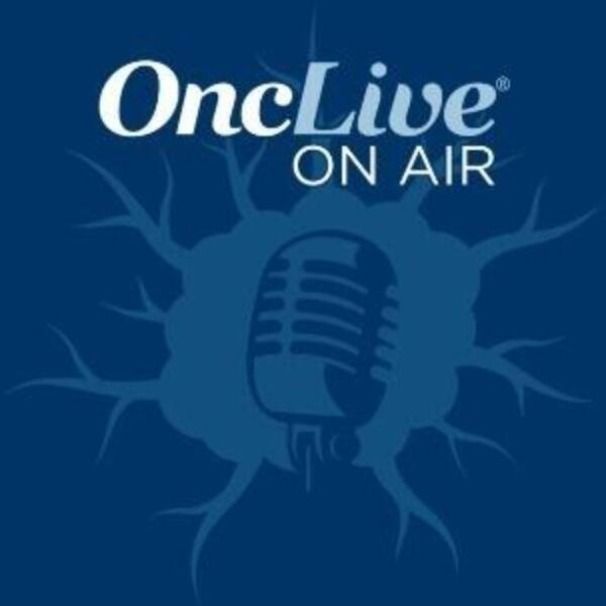News
Article
Dual-Targeted CAR T-Cell Therapy Displays Early Efficacy in Recurrent Glioblastoma
Author(s):
A CAR T-cell therapy directed toward 2 brain tumor–associated proteins displayed preliminary activity in recurrent glioblastoma.
Stephen Bagley, MD, MSCE

A CAR T-cell therapy directed toward 2 brain tumor–associated proteins displayed preliminary activity and safety in patients with recurrent glioblastoma, according to findings from a phase 1 trial (NCT05168423) published in Nature Medicine.1,2
The CAR T-cell agent targets EGFR and interleukin-13 receptor alpha 2 (IL13Rα2). Findings from a non-prespecified interim analysis of the study demonstrated that all evaluable patients with recurrent glioblastoma who received the agent (n = 6) experienced a reduction in the size of the enhancing tumor by first MRI scan obtained within 24 to 48 hours following CAR T-cell administration; however, none of these responses met the criteria for objective response per Response Assessment in Neuro-Oncology criteria. All patients had histologically confirmed disease progression prior to receiving the CAR T-cell therapy and did not receive intervening anticancer therapies between the surgery confirming tumor progression and receipt of CAR T cells. Additionally, all patients experienced disease progression in the interim between resection and CAR T-cell treatment.2
“This is the first time CAR T-cell therapy with two targets, rather than just one, has been administered to patients with glioblastoma,” Stephen Bagley, MD, MSCE, section chief, Neuro-Oncology, assistant professor of medicine, Hematology-Oncology, and assistant professor of medicine, Neurosurgery, at Penn Medicine in Philadelphia, Pennsylvania, as well as the principal investigator of the study, stated in a news release.1 “Our results suggest that this is a step in the right direction, and this method, when delivered through a patient’s spinal fluid, could be the key to developing therapies that outsmart the complicated defense systems of glioblastoma.”
The ongoing, single-center, open-label study is enrolling adult patients with recurrent glioblastoma and is the first-in-human clinical trial of CAR T-EGFR-IL13Rα2 cells. Patients must have IDH wild-type glioblastoma that has recurred following prior radiotherapy and must also have EGFR amplification by fluorescence. Those who had received bevacizumab (Avastin) within 3 months before registration or have tumors localized primarily to the brainstem or spinal cord are ineligible.2
Investigators employed a 3 + 3 trial design to evaluate 3 dose levels: 1 x 107, 2.5 x 107, and 5 x 107 CAR T-EGFR-IL13Rα2 cells. Findings from the lower 2 dose levels were reported in the interim analysis. The agent is given as a single dose through an intraventricular reservoir via intrathecal injection. The dose-limiting toxicity (DLT) observation period was 28 days.
The primary end points are safety and DLTs, as well as determining the maximum tolerated dose of CAR T-EGFR-IL13Rα2 cells. Secondary end points include the proportion of patients enrolled on this study who receive study treatment, frequency of manufacturing failures, progression-free survival, overall response rate, duration of response, and overall survival.
“The challenge with glioblastoma and other solid tumors is tumor heterogeneity, meaning not all cells within a glioblastoma tumor are the same or have the same antigen that a CAR T cell is engineered to attack, and every person’s glioblastoma is unique to them, so a treatment that works for one patient might not be as effective for another,” Bagley added in the press release.1 “What’s more, glioblastoma tumors can evade a patient’s immune system, and block immune cells—both engineered CAR T cells, and a patient’s own immune cells—that might otherwise fight the tumor. Our challenge is getting our treatment around the tumor’s defenses so we can kill it.”
In terms of safety, all patients treated at the 1 x 107 (n = 3) and 2.5 x 107 (n = 3) dose levels experienced early and moderate-severe neurotoxicity with elements of both immune effector–associated neurotoxicity syndrome and tumor inflammation–associated neurotoxicity. There was no significant difference in the type or grade of neurotoxicity between the 2 dose levels. All patients treated at the lower dose level experienced grade 1 cytokine release syndrome (CRS); those treated with the 2.5 x 107 dose experienced grade 1 (n = 1) and grade 2 (n = 2) CRS. A single patient treated at the higher dose level experienced a DLT.2
“We are energized by these results and are eager to continue our trial, which will give us a better understanding of how this dual-target CAR T-cell therapy affects a wider range of individuals with recurrent glioblastoma,” Donald M. O'Rourke, MD, director, Human Brain Tumor Tissue Bank, director, Glioblastoma Translational Center of Excellence, and the John Templeton, Jr., MD, Professor in Neurosurgery at Penn Medicine, added in the news release.1 “This cancer is unique in each individual, so a wider range of patients will help us determine the optimal dose, better understand effects like neurotoxicity, and more firmly establish efficacy.”
References
- “Dual-target” cell therapy appears to shrink brain tumors, Penn Medicine research finds. News release. Penn Medicine. March 13, 2024. Accessed March 13, 2024. https://www.pennmedicine.org/news/news-releases/2024/march/dual-target-cell-therapy-appears-to-shrink-brain-tumors
- Bagley SJ, Logun M, Fraietta JA, et al. Intrathecal bivalent CAR T cells targeting EGFR and IL13Rα2 in recurrent glioblastoma: phase 1 trial interim results. Nat Med. Published online March 13, 2024. doi:10.1038/s41591-024-02893-z








